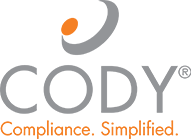Surviving the 2015 AEP Materials Creation Process – Part 1 of 2
The Centers for Medicare & Medicaid Services (CMS) recently released its model documents for the 2015 Annual Enrollment Period (AEP). The rigorous, highly complex rules and regulations for member marketing materials wreak havoc on health plans year after year – and the clock is now ticking.
Medicare plans must create, print and deliver AEP materials, specifically, Annual Notification of Change (ANOCs) and Evidence of Coverage (EOCs), to members by September 30. Preparing AEP materials can be a time-consuming, labor-intensive process and wrought with compliance risk.
1. Create a Comprehensive Task List and Timeline
Numerous tasks and various departments and people are involved in creating AEP materials from start to finish. Having a well-thought-out production timeline will help ensure your materials are completed on time and are compliant. Consider using a program, such as CodySoft, that allows you to assign tasks, people and deadlines to ensure streamlined project management, as this can make the job infinitely easier.
2. Use the 2015 Model Documents
Some health plans may be tempted to create their 2015 AEP materials by making updates to their 2014 templates. However, if one data point of the thousands you update is missed, your health plan is out of compliance. Using the 2015 model documents provided by CMS – which only requires a 10-day file and use approval period – is the least risky and most expeditious way to prepare your AEP materials.
3. Use a “Central Source of Truth” Data Grid for All Plan Benefit Information
Plan benefit information that must be included in members’ ANOCs, EOCs and Summary of Benefits (SB) could have variables that number in the tens of thousands. With such a large number of data elements to manage, plans must use one “central source of truth” for benefit information if they expect to meet CMS’s requirements. A tool like CodySoft will help automate this process and ensure CMS compliance.
